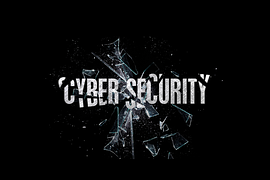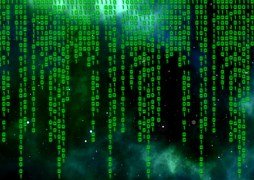Ransomware is a type of malware that prevents or limits users from accessing their system . either by locking the system's screen or by locking the user's file unless aransom is paid.Modern ransomware,collectively categorized as crypto-ransomware,encrypt certain file types on infected systems and forces user to pay the ransom through certain online payment methods to get a decrypt key
. either by locking the system's screen or by locking the user's file unless aransom is paid.Modern ransomware,collectively categorized as crypto-ransomware,encrypt certain file types on infected systems and forces user to pay the ransom through certain online payment methods to get a decrypt key ransomware can be downloaded onto systems when users visit malicious or compromised websites. It can also arrive as a payload either dropped or downloaded by other malware. Some ransomware are known to be delivered as attachments from spammed emails, downloaded from malicious pages through malvertisements,or dropped by exploit kits onto vulnerable systems
ransomware can be downloaded onto systems when users visit malicious or compromised websites. It can also arrive as a payload either dropped or downloaded by other malware. Some ransomware are known to be delivered as attachments from spammed emails, downloaded from malicious pages through malvertisements,or dropped by exploit kits onto vulnerable systems  once executed in the system. ransomware can either lock the computer screen,or,which prevents victims from using their system. this also shows the instructions on how users can pay for the ransom.The second type of ransomware prevents access to file to potentially critical or valuable files like documents and spreadsheets. Cases of ransomware infection were first seen in Russia between 2005-2006 in its earlier years,ransomware typically encrypted particular file type such as Doc,xLS,JPG,ZIP,PDF,and other commonly used file extensions
once executed in the system. ransomware can either lock the computer screen,or,which prevents victims from using their system. this also shows the instructions on how users can pay for the ransom.The second type of ransomware prevents access to file to potentially critical or valuable files like documents and spreadsheets. Cases of ransomware infection were first seen in Russia between 2005-2006 in its earlier years,ransomware typically encrypted particular file type such as Doc,xLS,JPG,ZIP,PDF,and other commonly used file extensions Ransomware called CryptoDefense or Cryptorchid encrypts database ,web ,office,video,images, scripts ,text,and other non-binary files .Deletes backup files to prevent restoration of encrypted files, and demands payments for a decrypt key for the locked files.Ransomware variant wannacry/wWCRY,which originally spread via malicious Dropbox URLs embedded in spam exploited patched vulnerability in the SMB server, thus resulting in the biggest ransomware attack in may 2017
Ransomware called CryptoDefense or Cryptorchid encrypts database ,web ,office,video,images, scripts ,text,and other non-binary files .Deletes backup files to prevent restoration of encrypted files, and demands payments for a decrypt key for the locked files.Ransomware variant wannacry/wWCRY,which originally spread via malicious Dropbox URLs embedded in spam exploited patched vulnerability in the SMB server, thus resulting in the biggest ransomware attack in may 2017
Hi! I am a robot. I just upvoted you! I found similar content that readers might be interested in:
https://www.trendmicro.com/vinfo/us/security/definition/Ransomware